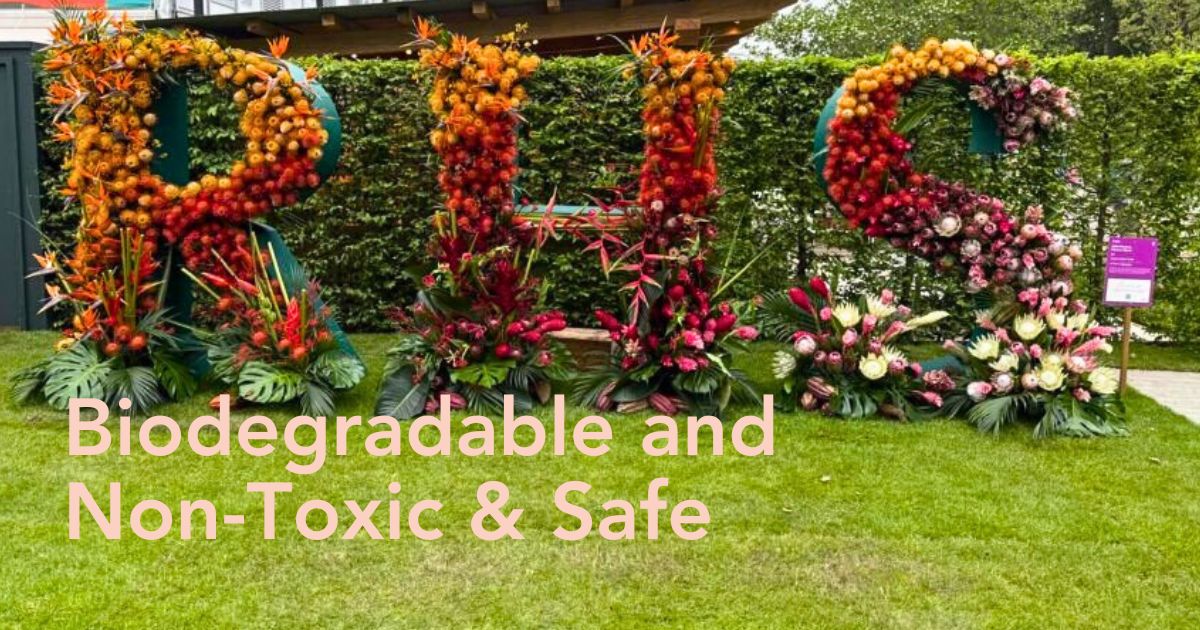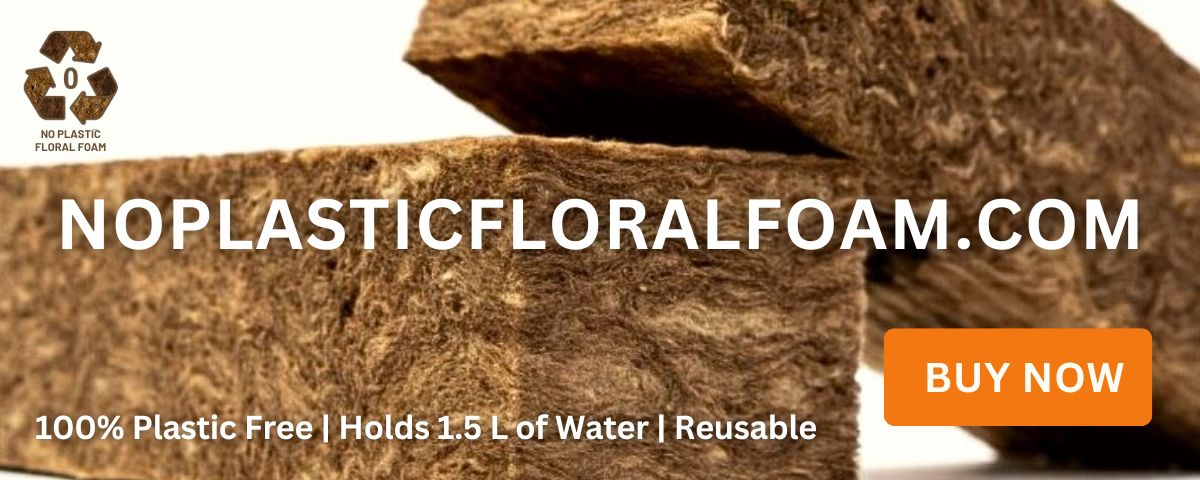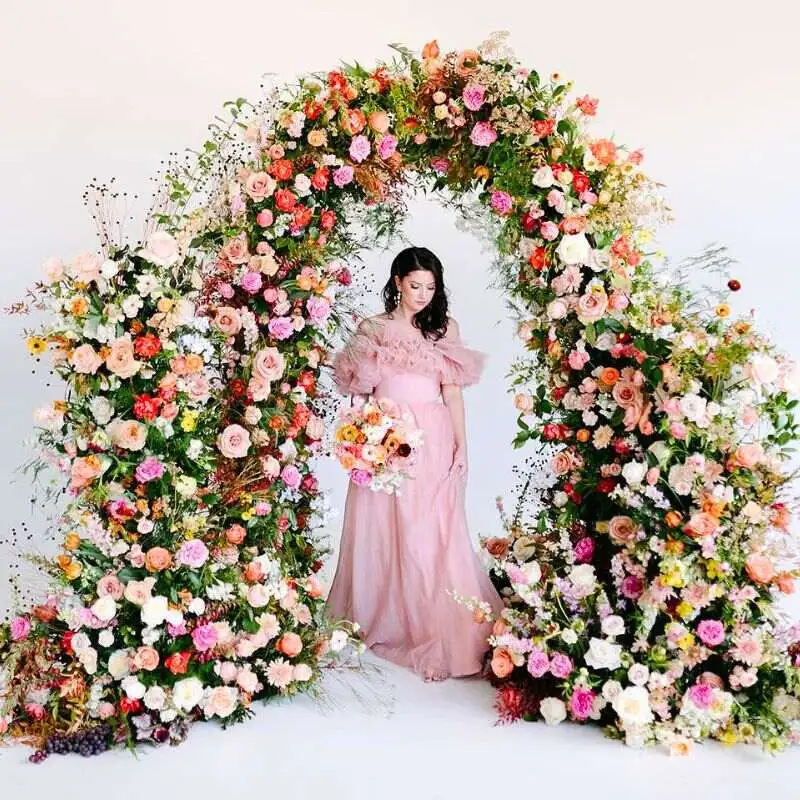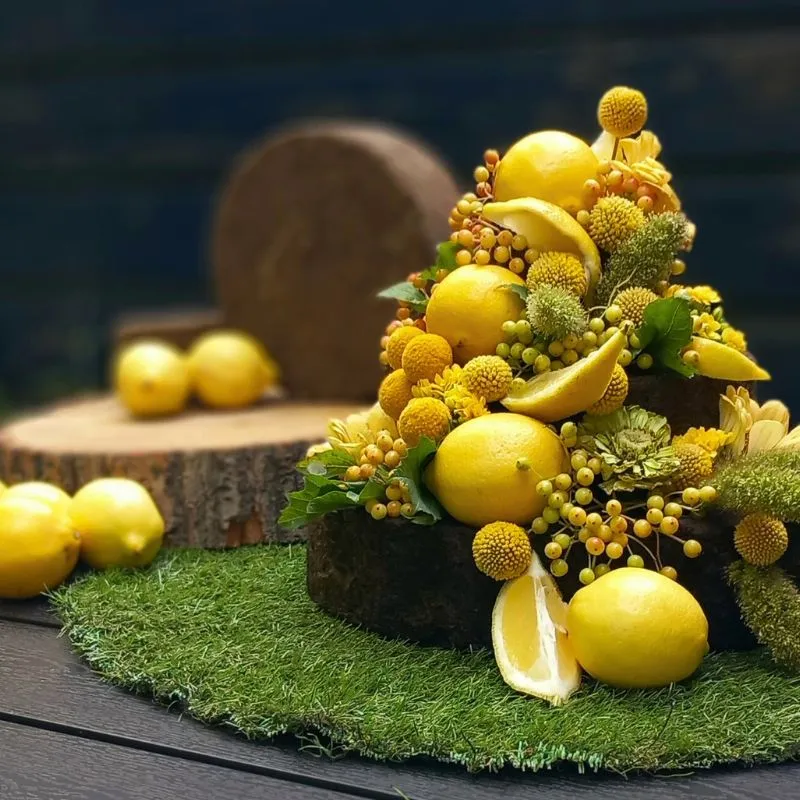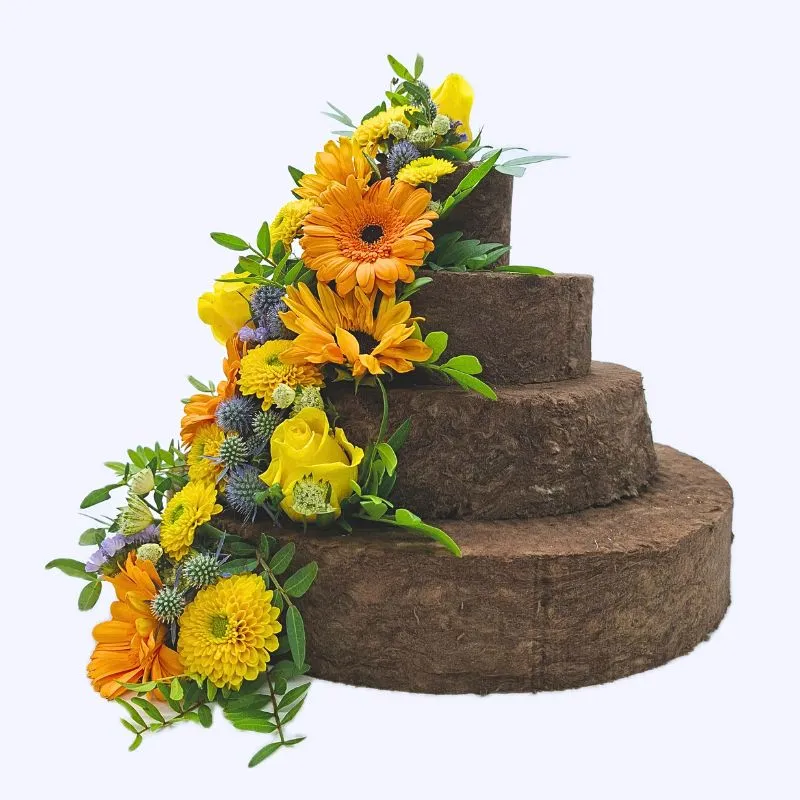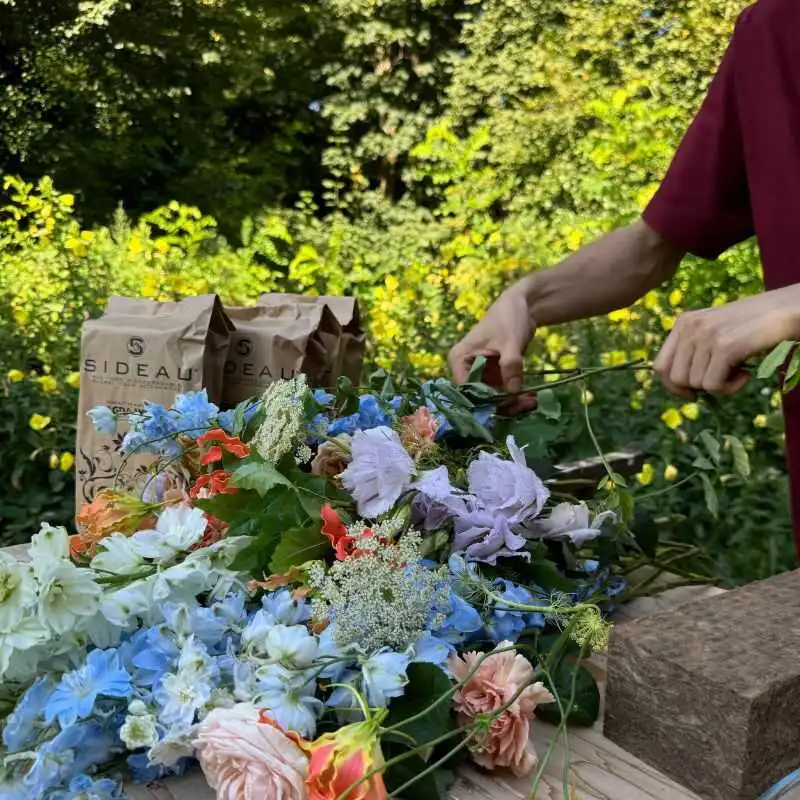The demand for sustainable floral mechanics is skyrocketing. A new supplier around the block is No Plastic Floral Foam! This young company helps floral designers, studios, and brands switch to plastic-free design with professional-grade alternatives.
In this article, why it matters, how it works in practice, what floral designers actually gain, plus a realistic case study.
Why Plastic-Free Floristry Is Going Mainstream
Anyone working in floral design for events or retail knows the tension: speed and reliability are essential on the workbench, while clients expect flawless presentation. At the same time, the pressure to move away from plastics is growing. Traditional phenol-formaldehyde foam (petroleum-based foam) has been the backbone of many floral designers and studios, but it contributes to plastic waste and microplastics. Research has shown that aquatic life can ingest floral foam microplastics, raising questions about long-term impact.
The industry is innovating toward plastic-free floristry. Prestigious shows like RHS Chelsea have banned plastic floral foam entirely, while sustainable design networks share alternatives. For florists, wholesalers, and brands, this means: learning to work with new materials without compromising workflow, hydration, or creative freedom. This is where No Plastic Floral Foam! comes in.
Inspiration: Foam-Free Design at RHS Chelsea
Plastic-free floristry is no longer an experimental concept; it is now front and center on the world stage. At the RHS Chelsea Flower Show, one of the most influential showcases in the floral world, traditional foam has been banned across all exhibits. This shift has not only encouraged but also accelerated innovation.
A striking example came from Acacia Creative Studio, which designed the bold tropical installation at the show’s entrance, spelling out 'RHS'. Their work combined vibrant color palettes with Sideau, proving that large-scale, sculptural design can be achieved without traditional plastic floral foam. Projects like these demonstrate how creativity and sustainability now go hand in hand, inspiring both boutique studios and large-scale event designers.
Scaling from Boutique to Large Events
Whether it’s a high-end hotel launch or a landmark flower show, the principles remain the same: florists need solutions that are fast to prepare, stable during build-up, and sustainable after breakdown. Plastic-free blocks and mechanics are now delivering that combination.
With the right techniques, foam-free alternatives keep stems hydrated across event timelines, while giving designers greater freedom to explore airy, sculptural compositions that highlight flowers rather than mechanics.
What Is No Plastic Floral Foam (and Why We Start With Sideau)
No Plastic Floral Foam! is a platform and webshop dedicated to accelerating the transition toward sustainable floral design. They curate and distribute professional, plastic-free mechanics that meet the performance standards of modern floristry, from studio work to large-scale events.
Their first featured product is Sideau, a basalt fiber block with a bio-based binder derived from sucrose, designed to replace traditional floral foam without compromising on quality. Sideau consists of roughly 97% basalt and 3% sugar binder. Properly hydrated, a standard block absorbs water in about 2–3 seconds, while its natural caramel tone allows flowers and branding to stand out without distraction.
Key features include:
- Plastic-free alternative to traditional plastic foam
- Fast water uptake when saturated correctly (approx. 2–3 seconds per block)
- Neutral caramel tone that supports clean design aesthetics
- Residual material becomes basalt sand after use
- Works with existing tools such as tape, glue, grids, and pin holders
Verification and context: Sideau is listed by the Dutch 'Barometer Duurzame Bloemist' certification as an approved product and has been accepted for use at RHS shows in the UK. No Plastic Floral Foam! is an independent platform; Sideau is its flagship product.
How Sideau Performs in Real Event Workflows
Speed
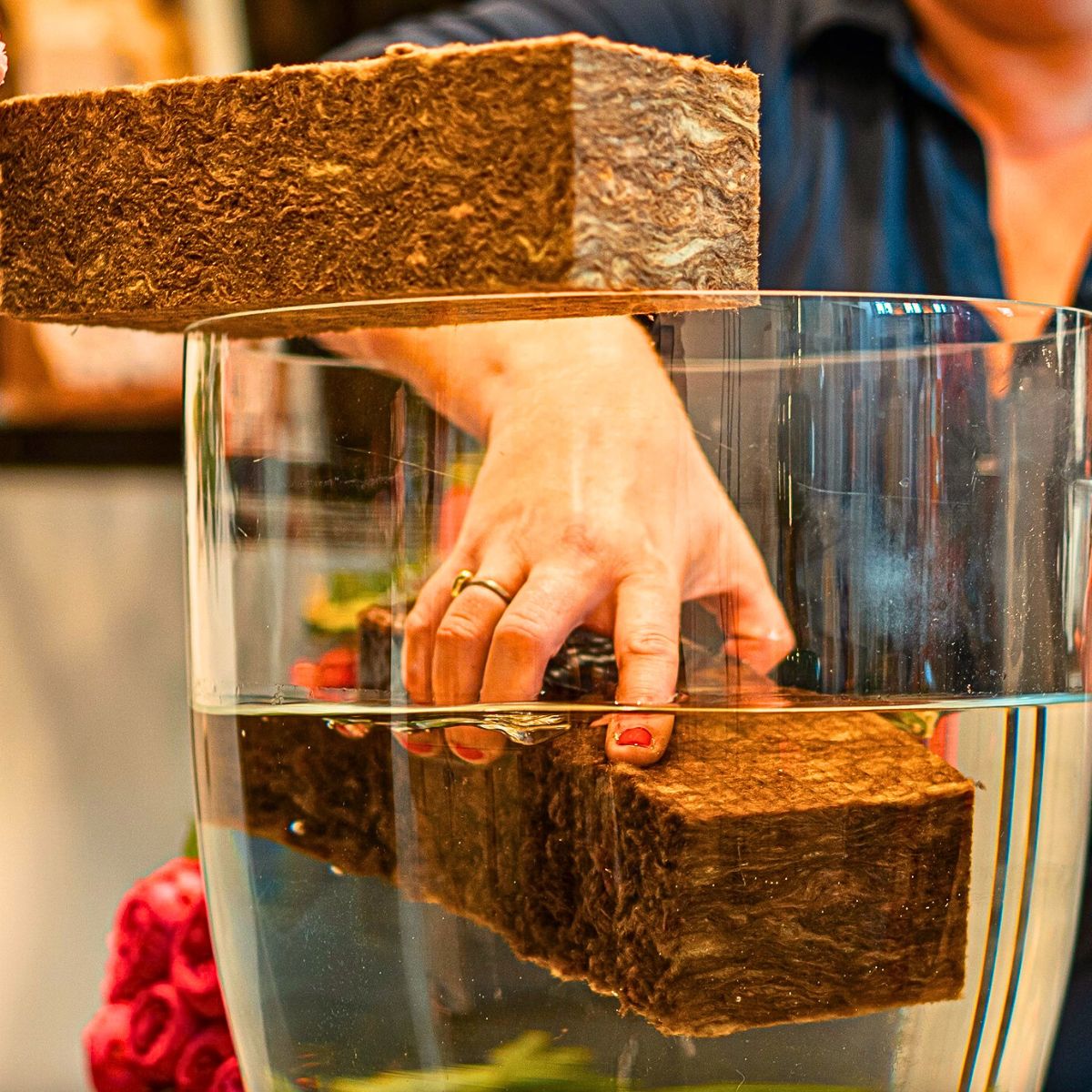
Quality
Once properly hydrated, a standard Sideau block absorbs approximately 1.5 liters of water within just a few seconds and maintains reliable moisture for 24 to 36 hours under typical event conditions. This stable hydration window minimizes the need for re-watering during build-ups and installations, giving teams confidence through long working days. As with any professional floral mechanic, precise fixation and positioning remain essential for consistent results.
Presentation
The calm caramel tone of Sideau blends naturally into arrangements and photographs cleanly, avoiding the bright green distraction of conventional foam. Designers often remark that this neutral base allows them to build taller, cleaner structures while keeping the focus entirely on the flowers and brand aesthetic. Choosing plastic-free mechanics also reduces plastic waste in breakdown, a visible step toward more sustainable floristry.
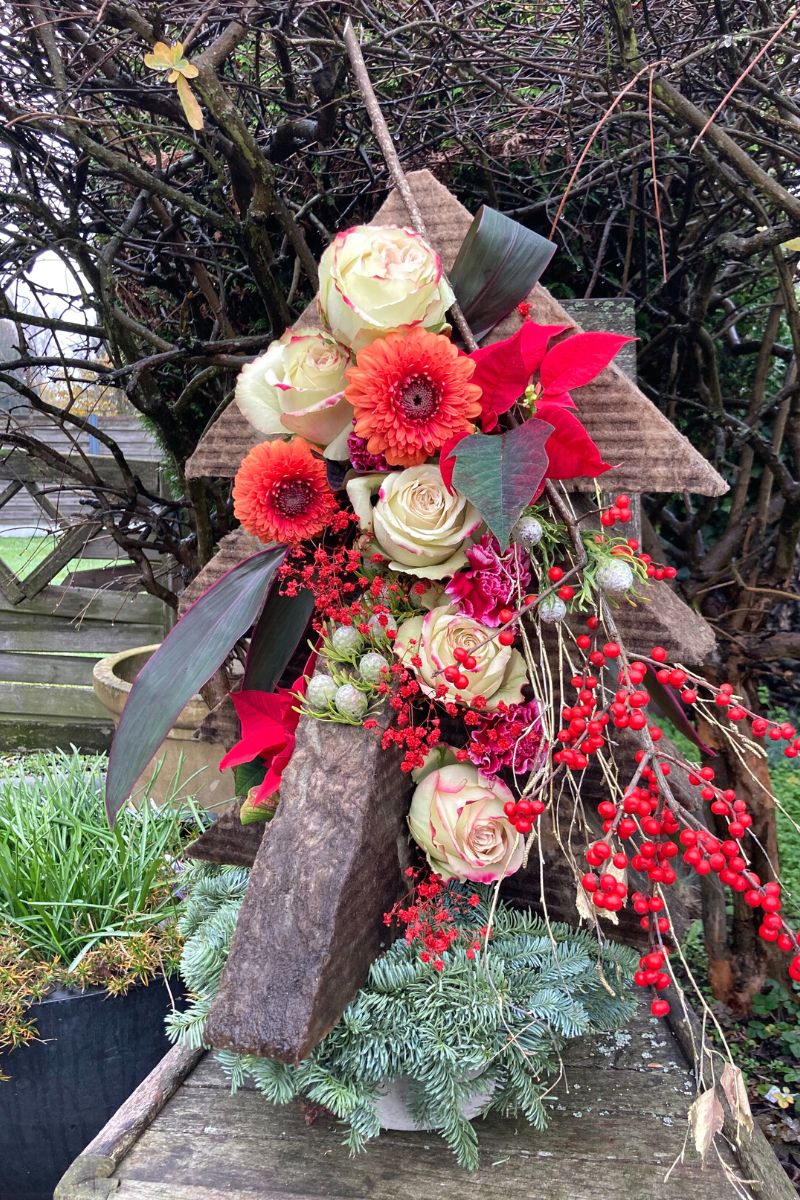
Operational
Working with Sideau simply requires a slightly different touch than traditional foam. Because the material absorbs water in just 2–3 seconds, precise hydration is key for optimal performance. Many florists describe the texture as firm yet responsive, offering secure stem placement once handled correctly. For finer stems, creating a small pilot hole with a skewer can make insertion smoother. After a brief adjustment, designers typically find the process intuitive, reporting that flowers stay well hydrated and that the natural caramel tone enhances the overall aesthetic of their arrangements.

Creative
Plastic-free blocks encourage airy, modern compositions. Sculptural shapes and clean silhouettes benefit from the neutral base, aligning with design trends that emphasize natural form, minimalism, and brand aesthetics.

An Invitation to Plastic Floral Foam
The floral industry is moving toward less plastic and more responsibility, without sacrificing quality or beauty. Through No Plastic Floral Foam, florists, wholesalers, and brands can access a growing range of professional, plastic-free mechanics, starting with Sideau, and expanding to the next generation of sustainable floral tools.
Join the community of forward-thinking makers testing these alternatives and shaping the future of floristry.
Discover No Plastic Floral Foam

